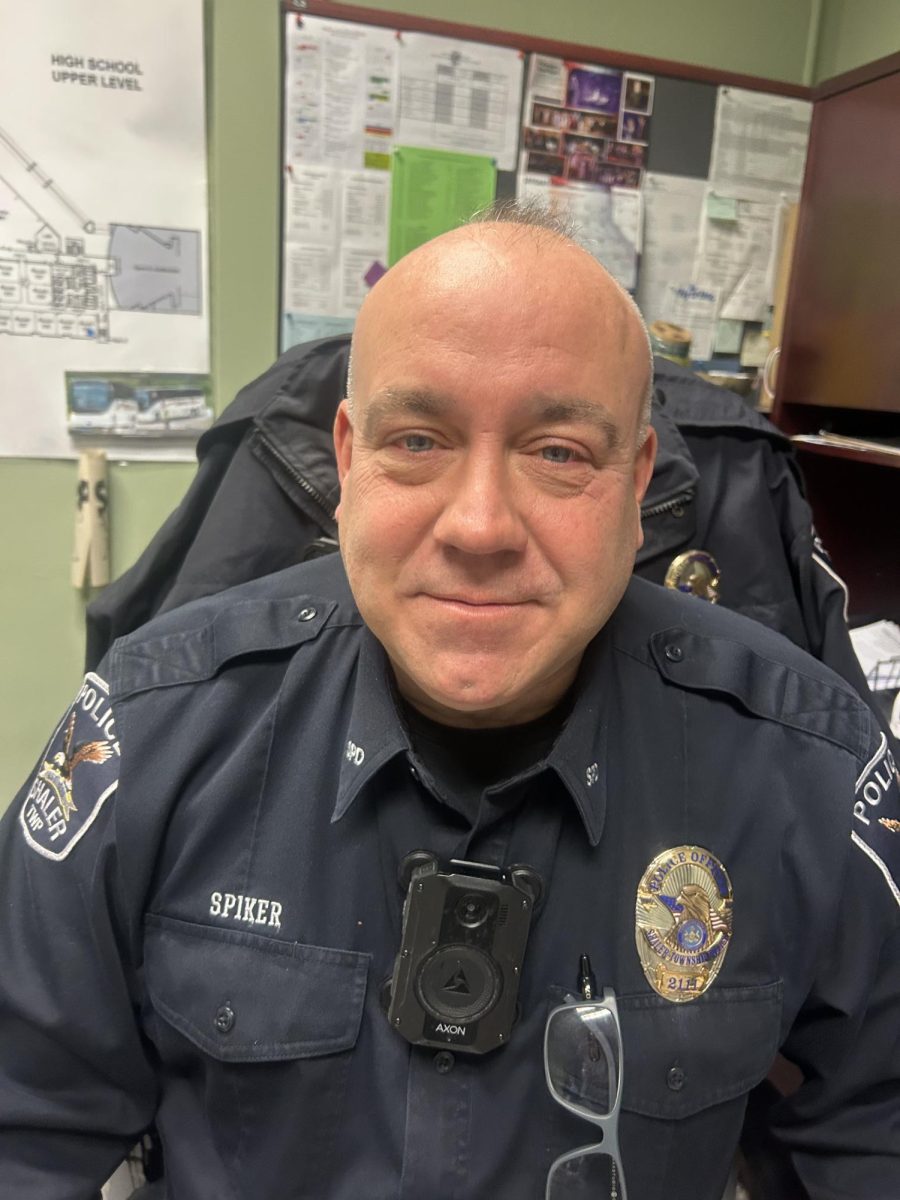A shared experience between just about every American high school students is walking into the bathrooms and seeing stalls taken up by vaping students.
Vaping has taken the world by storm. What once started as a niche habit that was generally looked down upon has now become a widespread issue that has created a slew of problems for educators and students alike.
Students may choose to avoid certain bathrooms between periods because of the concentrated amount of vapers.
“I have to avoid every bathroom other than the bathroom by gym A because there are people vaping. It’s annoying because it’s so out of the way but when there’s 10 people in the bathroom when I’m trying to pee it’s uncomfortable and even more annoying,” senior John Youk said.
“Every time you try to actually use the bathroom 9 times out of 10 you walk in on a group of girls looking at you like you are doing something wrong. Going to the bathroom at lunch is the worst because that’s where it happens the most,” Freshman Addison Applbaum said.
It’s not only the students that have these issues. AP United States History teacher Mr. Cory Williams also is aware of the issue.
“When kids have names for the bathrooms such as ‘the spot’ and ‘the trap’, I and half the student body know exactly where those are. And I know who I’d see if I walked into those bathrooms during specific periods,” Mr. Williams said.
One of the biggest issues with catching vapers is how easy it is to hide a vape pen or other device. Some districts across the country are using vape detectors to help curb the problem.
Back in 2016, vaping first became known to many people in the form of “juuls”. These discreet, fruity flavored vaping pens gained popularity on social media through memes and videos. The popularity of vaping skyrocketed from there.
Now, this problem has taken a hold on many teens in America. According to the FDA, in data collected from March to June of 2023, 2.8 million middle or high school students reported using any tobacco product. Of those, 77 percent use electronic cigarettes and vapes.
Nicotine vapes are not the only issue though; weed or THC vapes have also become popular. Weed pens are extremely small and give a more potent high, which makes them desirable for many teens.
“Now there are so many companies making their own devices that are throwaways. If you look at all the flavorings they’re clearly targeted at kids. There’s strawberry gelato, bubblegum, and the rest of the flavors are all fruity stuff. Even the vapes themselves are these super bright and colorful looking devices that are named after cartoon characters,” Shaler Area High School Dean of Students Mr. Justin Eskra said. “The problem is the THC vapes can be as high as 95% THC and nicotine vapes can be as high as 90% nicotine. Kids will say that they’re already addicted after using these devices 2 or 3 times.”
Teens believe that, since they are not inhaling smoke, the vapes have little negative consequences on their bodies and minds, but that is a misleading way to think about vaping. The lab-grown weed that teens are inhaling has many chemicals within it that sit in their lungs. Along with that, both nicotine and weed pens have trace levels of heavy metals inside of them, causing long term issues for users.
These life long issues take many forms, including breathing issues, mental health issues, and a heightened risk for cancer.
Those who use nicotine vapes experience heightened anxiety, depression, and anger issues due to the constant withdrawals and cravings. The weed vapes are a different issue, causing increased risk of incurable psychosis, a lack of brain development for those under 25, and with sleep issues along with all of the issues that nicotine vapes cause. Health officials have become increasingly concerned about the health of the students who use these products.
“Yesterday, I had a meeting with the police at a courthouse and it reminded me of the 1980’s war on drugs; it’s a losing situation. When you have kids who are in 3rd or 4th grade beginning to use vapes, it’s over. Give it another six years then you’ll see kids with major respiratory issues. I’ve seen them begin to need oxygen tanks,” Eskra said.
The main concern of the educators is both the age of the people and the wide variety of students using these products.
“You had your stereotypical potheads back when I and your parents went to school, but with vapes, everybody uses them. It doesn’t matter if you’re an AP student, band or choir kid, varsity athlete, your stereotypical pothead — every social group is vaping. Usually students say they started because it kept getting passed to them and they gave it a try,” Eskra said.
Students are getting these vapes from several different sources. The most common is from their fellow students. Students share or sell their vapes to their friends and it just spreads like a wildfire. Along with that, there are many vape shops that allow minors to buy vapes without an ID. The other sources are through online websites and even through their own parents.
Students who start in the early elementary ages usually get their vapes from their parents and they get addicted much easier and it just becomes worse as they grow up.
”I never thought of vaping until one of my friends offered it to me. It tasted good so I kept on hitting it and by the end of the week I bought my own,” a student vaper said. “There are a couple of stores that don’t ID me and I usually just buy from there. Buying at school is risky, but it’s more convenient.”
After hearing about these health issues, non-vapers think that those who vape should just quit, but it’s not that simple for most vapers.
The withdrawal symptoms are intense and sometimes painful so it’s immensely difficult for anyone to quit, especially students. Withdrawal symptoms cause nausea, anxiety, depression, weight loss, and difficulties with concentration.
“I tried stopping a couple times but when I wouldn’t vape for a few hours my withdrawal was so bad that I felt like I had no choice,” another vaper said. “I want to quit, but I seriously cannot for more than a couple of days. It is making my life hard and is ruining my relationship with my parents.”
For students who are interested in quitting, there are options, some as close as the Guidance Office. Any of the counselors or social workers have information and resources to share with students.
One such example is My Life My Quit which is a program for those ages 12-17 who want help quitting. Students can text or call 855-891-9989 or chat online with a coach at www.mylifemyquit.com for free and confidential assistance.
Vapes are not the only way nicotine is consumed at schools. Students have started using Zyns, small nicotine pouches that you put in your lip like chewing tobacco, that cause similar problems. Instead of a risk of lung cancer, with Zyns its gum and throat cancer.
Because of how much money they make and the fact that they technically aren’t breaking any laws, the companies that produce these products will never close down.
“The only way you can get rid of vaping is if you make it illegal for all the companies to sell vapes, that’s the bottom line. When Special K (synthetic weed) was going around, it showed that you can always make things illegal, but as long as I have a chemistry set, I can start taking different compounds of hemp plants and it’ll bypass federal laws.” Eskra said
These ambiguous federal laws are the main obstacle in tackling the vaping issue. Since the weed vapes aren’t technically marijuana, they are legal. The lab-grown weed still gets you high, but it isn’t the illegal substance as written in the laws. This gray area makes it difficult to actually crack down on vaping because you can’t nip it in the bud on legal grounds.
“That’s what some of these companies are doing, they’ll take a resin such as Delta 8 or Delta 9 which are legal in Pennsylvania with a .3% content, and they’ll take that resin with THC crystals that are harmless, but if you mix and heat them then you’ve created a highly intoxicating substance that gives you a greater high than if you were just smoking a joint. I think some of these companies will start skirting what the federal law is knowing they can get away with,” Mr. Eskra said.
Overall, the best and most reliable way to prevent vaping for teens is to educate both the students and the parents.
A large reason why students are getting into vaping is general ignorance within the topic. For a variety of reasons, teens do not know what they are getting themselves into and their parents may or may not know it’s happening right in front of them. Either way, educating people is at the core of trying to improve the problem.
“Educating parents about the harmful effects of vaping is a huge part of preventing students from the start,” Eskra said.
Please scan the code or use the link to answer some questions about your experience with vaping at SAHS
https://forms.gle/pcPig6E7VUGj3MyE6










